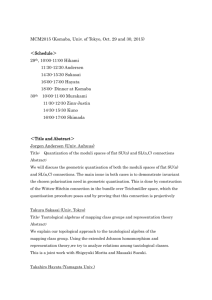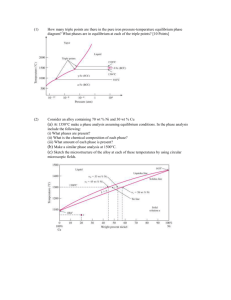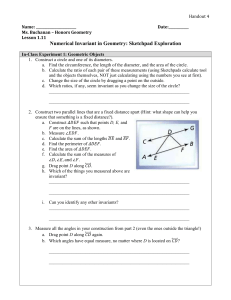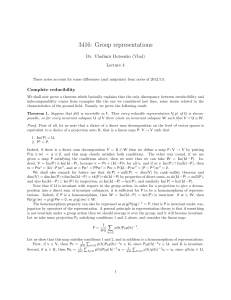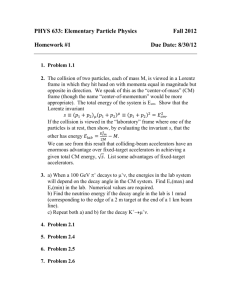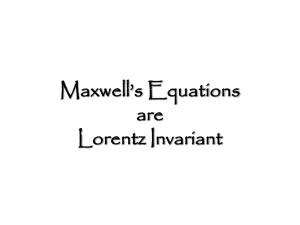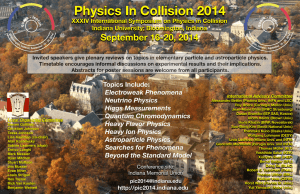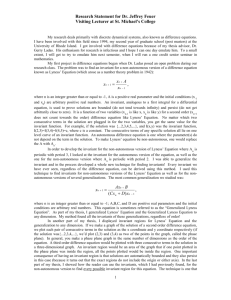MCM(program)
advertisement
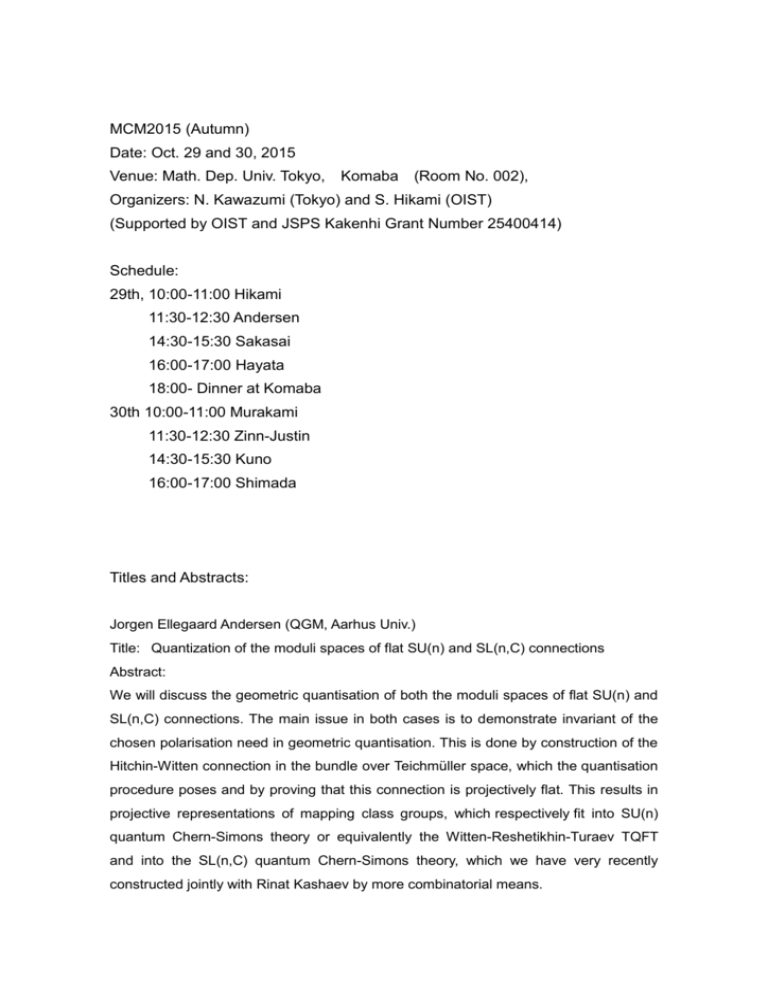
MCM2015 (Autumn) Date: Oct. 29 and 30, 2015 Venue: Math. Dep. Univ. Tokyo, Komaba (Room No. 002), Organizers: N. Kawazumi (Tokyo) and S. Hikami (OIST) (Supported by OIST and JSPS Kakenhi Grant Number 25400414) Schedule: 29th, 10:00-11:00 Hikami 11:30-12:30 Andersen 14:30-15:30 Sakasai 16:00-17:00 Hayata 18:00- Dinner at Komaba 30th 10:00-11:00 Murakami 11:30-12:30 Zinn-Justin 14:30-15:30 Kuno 16:00-17:00 Shimada Titles and Abstracts: Jorgen Ellegaard Andersen (QGM, Aarhus Univ.) Title: Quantization of the moduli spaces of flat SU(n) and SL(n,C) connections Abstract: We will discuss the geometric quantisation of both the moduli spaces of flat SU(n) and SL(n,C) connections. The main issue in both cases is to demonstrate invariant of the chosen polarisation need in geometric quantisation. This is done by construction of the Hitchin-Witten connection in the bundle over Teichmüller space, which the quantisation procedure poses and by proving that this connection is projectively flat. This results in projective representations of mapping class groups, which respectively fit into SU(n) quantum Chern-Simons theory or equivalently the Witten-Reshetikhin-Turaev TQFT and into the SL(n,C) quantum Chern-Simons theory, which we have very recently constructed jointly with Rinat Kashaev by more combinatorial means. Takuya Sakasai (Univ. Tokyo) Title: Tautological algebras of mapping class groups and representation theory Abstract: We explain our topological approach to the tautological algebra of the mapping class group. Using the extended Johnson homomorphism and representation theory, we try to analyze relations among tautological classes. This is a joint work with Shigeyuki Morita and Masaaki Suzuki. Takahiro Hayata (Yamagata Univ.) Title: 0 cells of the Siegel-Gottschling fundamental domain of degree 2 Abstract: The Siegel upper half space of degree n is the set of the complex symmetric matrices of degree n whose imaginary part is positive definite. The Siegel modular group acts discretely on the space by the linear fractional transformation. From the Minkowski reduction theory and the highest point method, the fundamental domain by this group action is obtained by Siegel. It has a description by the finitely many real hypersurfaces. When degree 2, the minimal set of those hypersurfaces is determined by Gottschling. The 0 cell is by definition the point on the boundary as the 0 dimensional solution on the intersection of the selected hypersurfaces. I want to mention the way to obtain the 0 cells using the Groebner basis and the equivalence using the short vector algorithm in my talk. Yusuke Kuno (Tsuda College) title:A homology valued invariant for trivalent fatgraph spines Abstract: We introduce an invariant for trivalent fatgraph spines of a once bordered surface. It takes values in the first homology of the surface, and comes from consideration of two 1-cocycles on the fatgraph complex which are cohomologous to each other.We show that the mod 2 reduction of the invariant is the difference of canonically defined two spin structures on the surface. Jun Murakami (Waseda Univ.) Title: Representations of the mapping class groups from LMO and RT invariants Abstract: We construct representations of the mapping class groups of an oriented surface from the LMO invariant. The LMO invariant has a natural grading, the degree 0 part corresponds to the representation on the 1st homology group, and degree 1 part corresponds to the Casson invariant. On the other hand, we also have representations of mapping class groups constructed from the Reshetikhin-Turaev (RT) invariant, which is defined over the ring of cyclotomic integers, and we explain certain similarity in the structure between the LMO representation and the modulo p reduction of the RT representation. Hirohiko Shimada (OIST) Title: Fractal dimensions of self-avoiding walks and Ising high-temperature graphs in 3D CFT Abstract: In the continuum limit of spin models, the two-point correlation function is associated with fractal random-walks (RW). Despite the success in 2D, the critical geometry for the RW and conformal field theory in 3D remain largely unexplored. We apply recently developing ideas in the conformal bootstrap for the one-parameter-family of the 3D O(N) vector model. This allows us, in particular, to determine the fractal dimension of the self-avoiding RW and that of the RW behind the Ising model (arXiv: 1509.04039). The idea is still empirical, but based on the associativity of the operator algebra formulated as a sum rule for the global conformal blocks of SL(2,C)-type. The relation to the Virasoro/modular bootstrap may be briefly discussed. Paul Zinn-Justin, (Paris VI) Title: The geometry of loop models Abstract: In this work in collaboration with A. Knutson, we investigate the correspondence between algebraic geometry and quantum integrable systems from the point of view of Grobner degenerations. The latter is very combinatorial in nature and at a technical level, applies equally well to cohomology and K-theory. Following Knutson and Miller, I shall describe the simplest framework in which this approach works, namely (matrix) Schubert varieties and Schubert polynomials. I shall next formulate several variations and extensions, which will lead us naturally to loop models on 2d lattices and to the Yang--Baxter equation: first noncrossing loops (Temperley--Lieb model), then crossing loops (Brauer model). Shinobu Hikami (OIST) Title: p-spin curve and Euler characteristics Abstract: Moduli space of p-spin curves is discussed by matrix model, and the intersection numbers of p-spin curves are shown to be related to Euler characteristics of orbifold. The relation to arithmetic Euler characteristics and Gauss-Bonnet volume is discussed.
